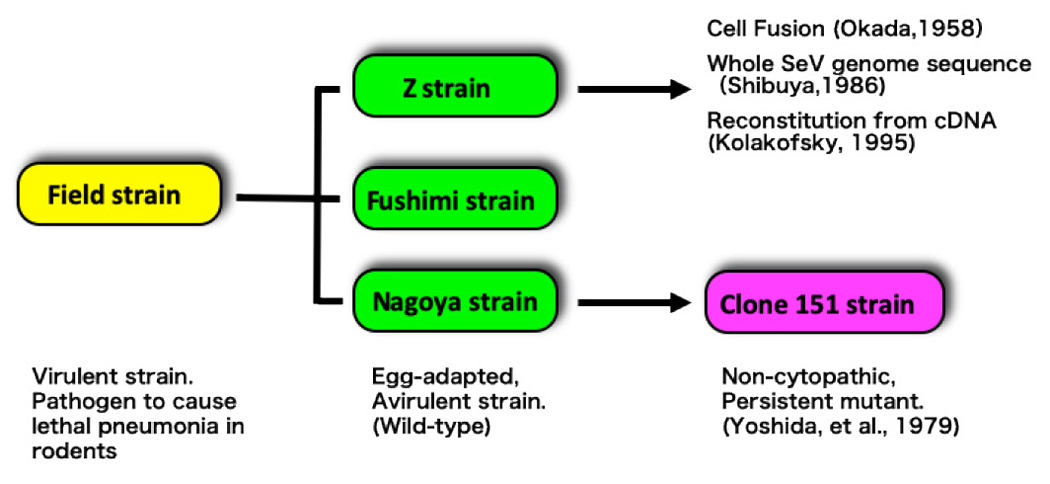
What Is Stealth RNA Vector (SRV)?
SRV is an expression vector that has minus single-stranded RNA as its genome structure and enables persistent gene expression in the cytoplasm for a long time. While lentivirus inserts genes (DNA) into chromosomes and AAV stabilizes in nucleus without inserting genes (DNA) into chromosomes, Stealth RNA Vector (SRV) stabilizes genes (RNA) in the cytoplasm.

RNA viruses are known as gene expression systems in the cytoplasm, but they are highly cytotoxic and do not allow persistent gene expression in cells. In 1979, Dr, Yoshida (Hiroshima University) discovered Clone 151 as Sendai virus mutant. A long study revealed that clone 151 had many mutations in the Sendai virus genome, which were mutations without cytotoxicity and that allow stable gene expression over a long period of time. From this series of research, SRV was developed, which uses artificially synthesized RNA as its genome.

Structure of Stealth RNA Vector
The stealth RNA vector is a chimeric gene delivery/expression system consisting of viral envelope and synthetic RNA genome. The viral envelope leads to efficient gene delivery. And over 97% of the SRV genome is also optimized for human cells. This optimization is aimed at avoiding host cell defense system by artificially synthesizing and optimizing RNA in expectation of stable and persistent gene expression in vitro and in vivo.

SRV expresses > 10 genes simultaneously and stably.
The greatest features of SRV is the ability to install at least 10 genes (total ≦ 13.5 knt) in one vector and to express them simultaneously.


